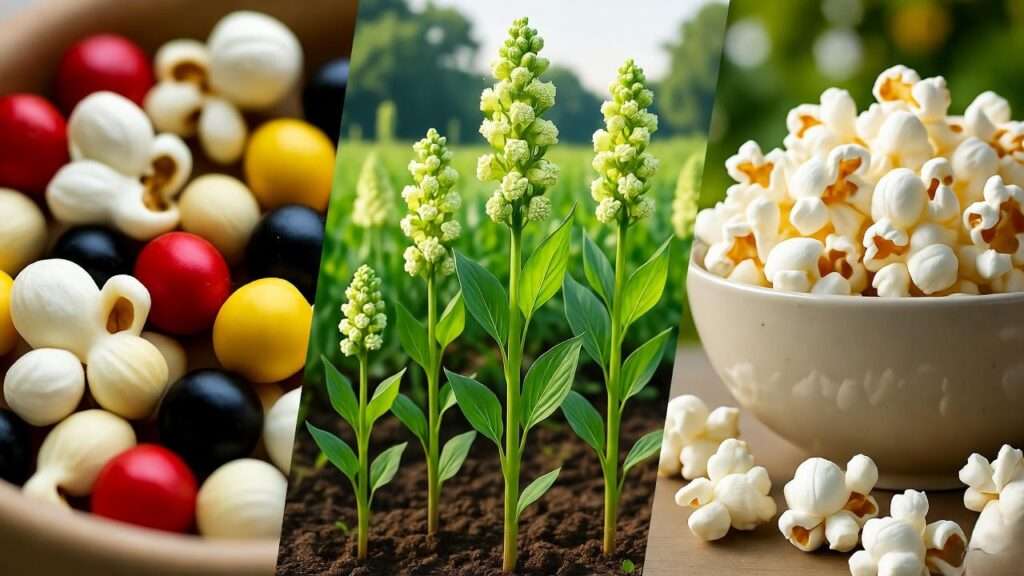Picture this: you’re curled up on the couch, enjoying a bowl of warm, buttery popcorn that you grew yourself, right in your backyard! 🌞 The crunch, the flavor, the pride of harvesting your own popcorn seeds for planting—it’s an unbeatable experience. Growing popcorn at home is more than just a gardening project; it’s a fun, sustainable way to enjoy a wholesome snack while connecting with nature. Whether you’re a seasoned gardener or a beginner, this guide will walk you through choosing the best popcorn seeds for planting, nurturing your crop, and popping those kernels to perfection. With expert tips and step-by-step advice, you’ll be savoring homegrown popcorn in no time! 🍿
In this article, we’ll explore why growing popcorn is so rewarding, how to select the best popcorn seeds for your garden, and how to plant, care for, and harvest your crop. Backed by years of horticultural expertise and sustainable gardening practices, this comprehensive guide is designed to help you succeed. Let’s dive into the world of popcorn gardening! 🌿
Why Grow Your Own Popcorn? 🌿
The Joy of Homegrown Popcorn 🎉
There’s something magical about growing your own food, and popcorn takes it to a whole new level. Unlike store-bought kernels, homegrown popcorn offers unmatched freshness and flavor. Imagine the satisfaction of watching tiny seeds transform into towering stalks, then harvesting and popping your own kernels for movie night. It’s a rewarding journey that combines gardening with culinary delight. Plus, it’s a fantastic way to share the love of gardening with family and friends—kids especially love watching the kernels pop! 😊
For example, homegrown popcorn often has a richer, nuttier flavor compared to commercial brands. The act of growing, harvesting, and popping your own kernels creates a connection to your food that’s hard to replicate.
Benefits of Growing Popcorn at Home 🌼
Why choose popcorn seeds for planting over other crops? Here are some compelling reasons:
- Cost-Effectiveness: A single packet of popcorn seeds can yield dozens of ears, saving you money compared to buying gourmet popcorn.
- Organic Control: You decide what goes into your soil and plants, ensuring chemical-free, organic kernels.
- Sustainability: Growing your own popcorn reduces reliance on store-bought products, cutting down on packaging waste and transportation emissions.
- Family-Friendly Fun: From planting to popping, it’s an engaging activity for all ages, teaching kids about food and nature.
By growing popcorn, you’re not just cultivating a crop—you’re nurturing a sustainable, hands-on experience that’s as delicious as it is rewarding. 🌽
Understanding Popcorn Seeds for Planting 🌽
What Makes Popcorn Seeds Different? 🤔
Not all corn is created equal! Popcorn seeds, or Zea mays var. everta, are distinct from sweet corn or field corn. Popcorn kernels have a hard outer hull and a starchy interior that expands when heated, creating that signature pop. This unique structure is why only specific varieties of corn can be used for popping.
Expert Insight: The science behind popping is fascinating. The kernel’s hard hull traps moisture inside. When heated, the moisture turns to steam, building pressure until the hull bursts, releasing the fluffy starch inside. This is why proper drying and storage are critical for homegrown popcorn—it ensures the kernels pop perfectly! 🔥
Types of Popcorn Seeds for Planting 🌈
When choosing popcorn seeds for planting, you’ll encounter a variety of options, each with unique traits. Here’s a breakdown of the main types:
- Heirloom Varieties:
- Examples: Strawberry Popcorn, Blue Popcorn, Japanese Hull-less.
- Benefits: These open-pollinated seeds offer unique flavors, vibrant colors, and a connection to agricultural history. They’re ideal for gardeners who value tradition and biodiversity.
- Hybrid Varieties:
- Examples: Robust Pop 400MR, Ristra Cayenne.
- Benefits: Hybrids are bred for higher yields, disease resistance, and uniformity, making them great for beginners or challenging climates.
- Organic vs. Non-Organic Seeds:
- Organic seeds are produced without synthetic chemicals, aligning with eco-conscious gardening. Non-organic seeds may be treated for disease resistance but could introduce unwanted chemicals into your garden.
Comparison Table: Popular Popcorn Seed Varieties
| Variety | Kernel Color | Flavor Profile | Growing Difficulty | Yield |
|---|---|---|---|---|
| Strawberry Popcorn | Red | Sweet, nutty | Easy | Moderate |
| Blue Popcorn | Blue | Robust, earthy | Moderate | High |
| Japanese Hull-less | White | Delicate | Easy | Moderate |
| Robust Pop 400MR | Yellow | Classic | Easy | High |
| Ladyfinger Popcorn | White | Sweet | Moderate | Moderate |
How to Choose the Best Popcorn Seeds for Planting 🧐
Factors to Consider When Selecting Seeds 📋
Selecting the right popcorn seeds for planting depends on several key factors:
- Climate and Growing Zone:
- Popcorn thrives in warm climates (USDA zones 3-11). Short-season varieties like Strawberry Popcorn are ideal for cooler regions with shorter growing seasons.
- Check your USDA hardiness zone to match seeds to your local climate.
- Soil and Space Requirements:
- Popcorn needs fertile, well-drained soil with a pH of 6.0-7.0. Each plant requires about 4-6 feet of space for optimal growth.
- Small gardens can opt for compact varieties like Japanese Hull-less.
- Flavor and Texture Preferences:
- Popcorn comes in two main types: butterfly (light and fluffy) and mushroom (dense and round). Choose based on your snacking preferences.
- Seed Quality and Source:
- Purchase from reputable suppliers like Johnny’s Selected Seeds or Baker Creek Heirloom Seeds to ensure high germination rates.
- Check seed packets for freshness—viable seeds should be plump and free of cracks.
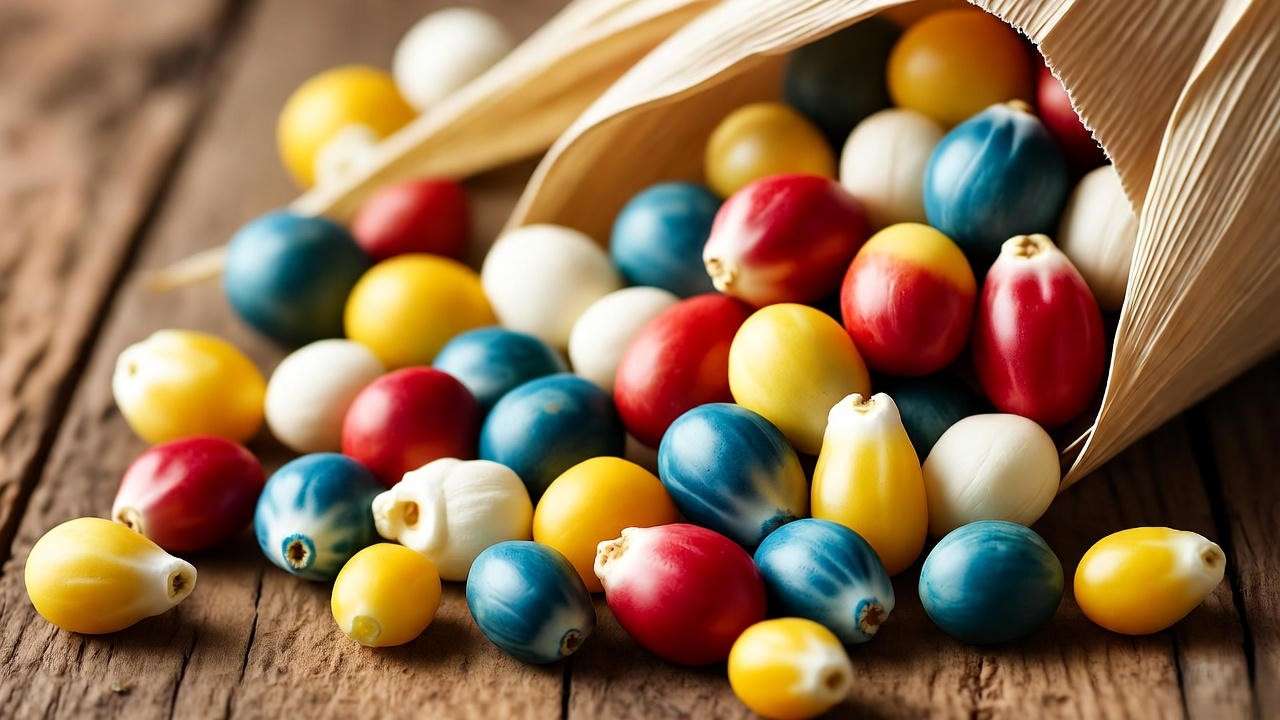
Tip: Always test a few seeds for germination before planting your entire crop. Soak 10 seeds in water for 24 hours, then wrap them in a damp paper towel. If at least 8 sprout within a week, your seeds are good to go! 🌱
Top 5 Recommended Popcorn Seed Varieties for 2025 🌟
Here are five standout popcorn seed varieties, perfect for home gardeners:
- Strawberry Popcorn:
- Description: Compact plants (4-5 feet tall) produce small, ruby-red ears. Sweet, nutty flavor.
- Pros: Ideal for small gardens, visually striking.
- Cons: Lower yield than hybrids.
- Where to Buy: Baker Creek Heirloom Seeds.
- Blue Popcorn:
- Description: Vibrant blue kernels with a robust, earthy taste. Grows 6-7 feet tall.
- Pros: High yield, ornamental appeal.
- Cons: Requires more space.
- Where to Buy: Seed Savers Exchange.
- Japanese Hull-less:
- Description: White kernels with a delicate, tender texture. Easy to pop.
- Pros: Great for beginners, minimal hull residue.
- Cons: Smaller ears.
- Where to Buy: Johnny’s Selected Seeds.
- Robust Pop 400MR:
- Description: Yellow kernels, high-yielding hybrid with classic popcorn flavor.
- Pros: Disease-resistant, reliable for diverse climates.
- Cons: Less unique flavor than heirlooms.
- Where to Buy: Burpee.
- Ladyfinger Popcorn:
- Description: Small, white kernels with a sweet, snackable taste.
- Pros: Fast-growing, great for short seasons.
- Cons: Moderate yield.
- Where to Buy: Territorial Seed Company.
Step-by-Step Guide to Planting Popcorn Seeds 🌱
Preparing Your Garden 🛠️
Before planting, set the stage for success with proper preparation:
- Soil Preparation:
- Test your soil’s pH (aim for 6.0-7.0) using a home testing kit.
- Amend with organic compost or well-rotted manure to boost fertility.
- Ensure good drainage—popcorn hates waterlogged roots.
- Choosing the Right Location:
- Select a spot with full sun (6-8 hours daily) and protection from strong winds.
- Avoid low-lying areas where water pools.
- Timing Your Planting:
- Plant in spring after the last frost when soil temperatures reach 60°F (15°C).
- For most U.S. regions, this is April to May. In warmer zones, you can plant as early as March.
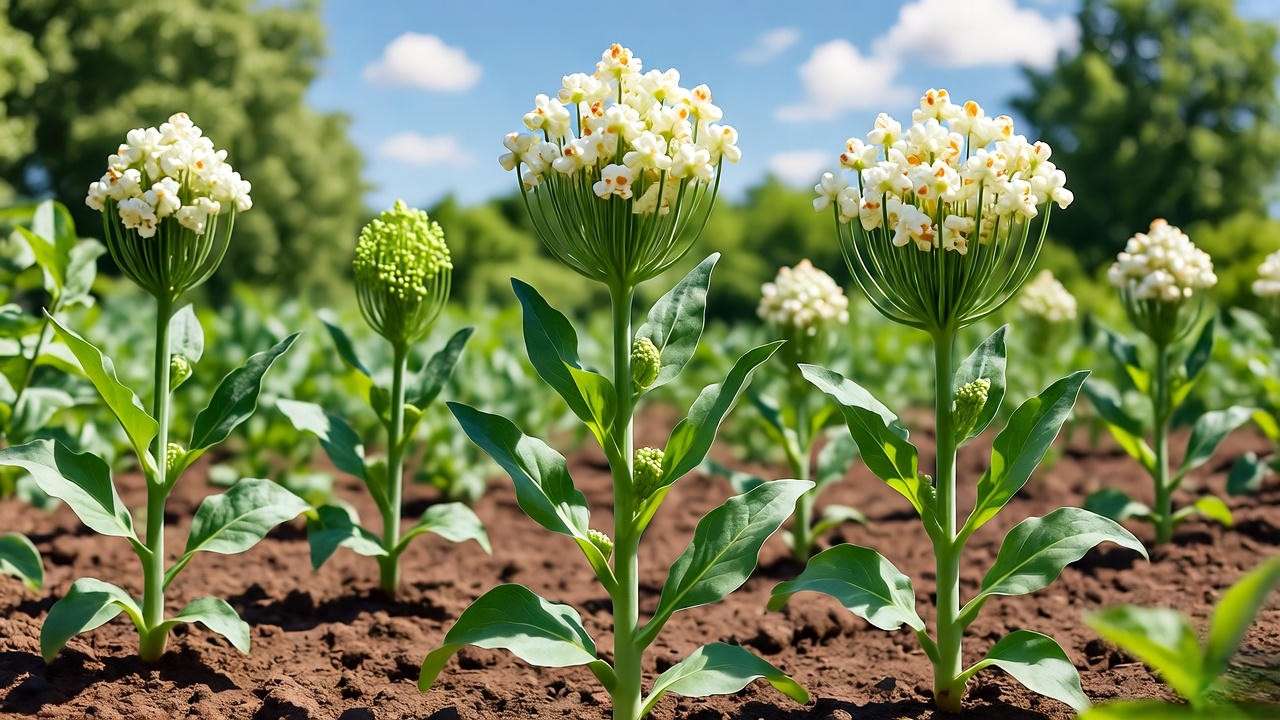
Expert Tip: Warm the soil with black plastic mulch a week before planting to speed up germination in cooler climates. 🌞
Planting Popcorn Seeds 🌾
Follow these steps for successful planting:
- Soak Seeds: Soak seeds in water for 8-12 hours to soften the hull and encourage germination.
- Plant Seeds: Dig small holes 1-2 inches deep, spacing seeds 8-12 inches apart in rows 24-36 inches apart.
- Block Planting: Plant in blocks of at least 4×4 feet to ensure proper pollination, as popcorn is wind-pollinated.
- Cover and Water: Cover seeds with soil and water gently to settle the soil.
Tip: Label your rows with variety names and planting dates to track progress. 📝
Caring for Popcorn Plants 🌞
Popcorn plants need consistent care to thrive:
- Watering:
- Provide 1-2 inches of water per week, especially during tasseling (when pollen forms) and ear development.
- Use drip irrigation or soaker hoses to keep foliage dry and prevent disease.
- Fertilizing:
- Apply a balanced fertilizer (e.g., 10-10-10) at planting, then again when plants are knee-high and at tasseling.
- Avoid over-fertilizing, which can lead to lush foliage but poor ear production.
- Weed and Pest Control:
- Mulch with straw or wood chips to suppress weeds.
- Watch for pests like corn earworms or aphids. Use organic solutions like neem oil or introduce beneficial insects like ladybugs.
- Companion planting with marigolds can deter pests naturally.
Harvesting Popcorn 🌽
Knowing when and how to harvest is key to great popcorn:
- Signs of Readiness:
- Kernels are hard, glossy, and fully colored.
- Husks are dry and brown, and stalks are turning yellow.
- Timing:
- Most varieties are ready 85-120 days after planting.
- Check your seed packet for specific days to maturity.
- Harvesting Steps:
- Cut ears from the stalk with a sharp knife, leaving some husk for protection.
- Hang ears in a warm, well-ventilated area (e.g., a garage) for 4-6 weeks to dry.
- Shell kernels by rubbing ears together or using a corn sheller.
- Store kernels in airtight containers in a cool, dry place.
- Tip: Test-pop a few kernels after drying. If they don’t pop well, dry the ears for another week.
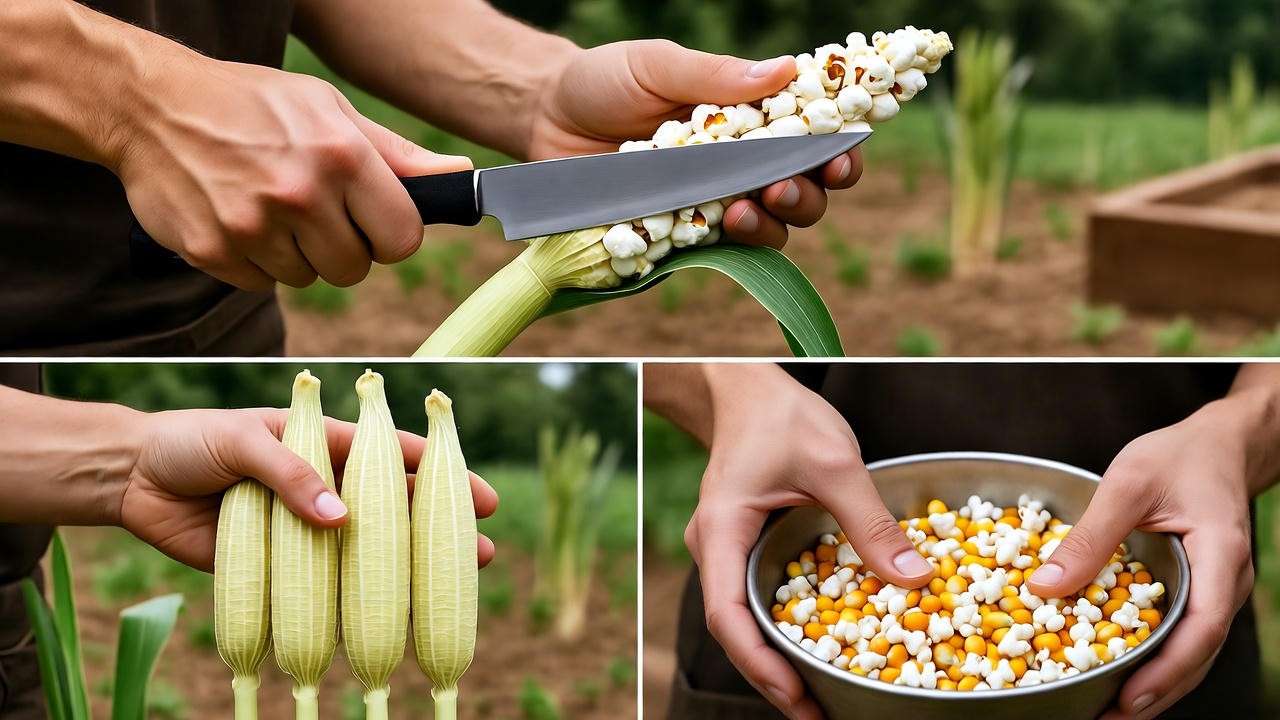
Popping Your Homegrown Popcorn 🍿
How to Pop Homegrown Kernels 🔥
Nothing beats the moment you pop your homegrown kernels! Here’s how to do it on the stovetop:
- Heat 2-3 tablespoons of oil (coconut or vegetable) in a heavy-bottomed pan over medium heat.
- Add ½ cup of kernels when the oil is hot (test with 1-2 kernels first).
- Cover the pan and shake occasionally to prevent burning.
- Remove from heat when popping slows to 2-3 seconds between pops.
- Season with sea salt, butter, or herbs like rosemary for a gourmet touch.
Alternative Methods:
- Air Popper: Great for low-oil popping.
- Microwave: Place kernels in a brown paper bag, fold the top, and microwave for 2-3 minutes.
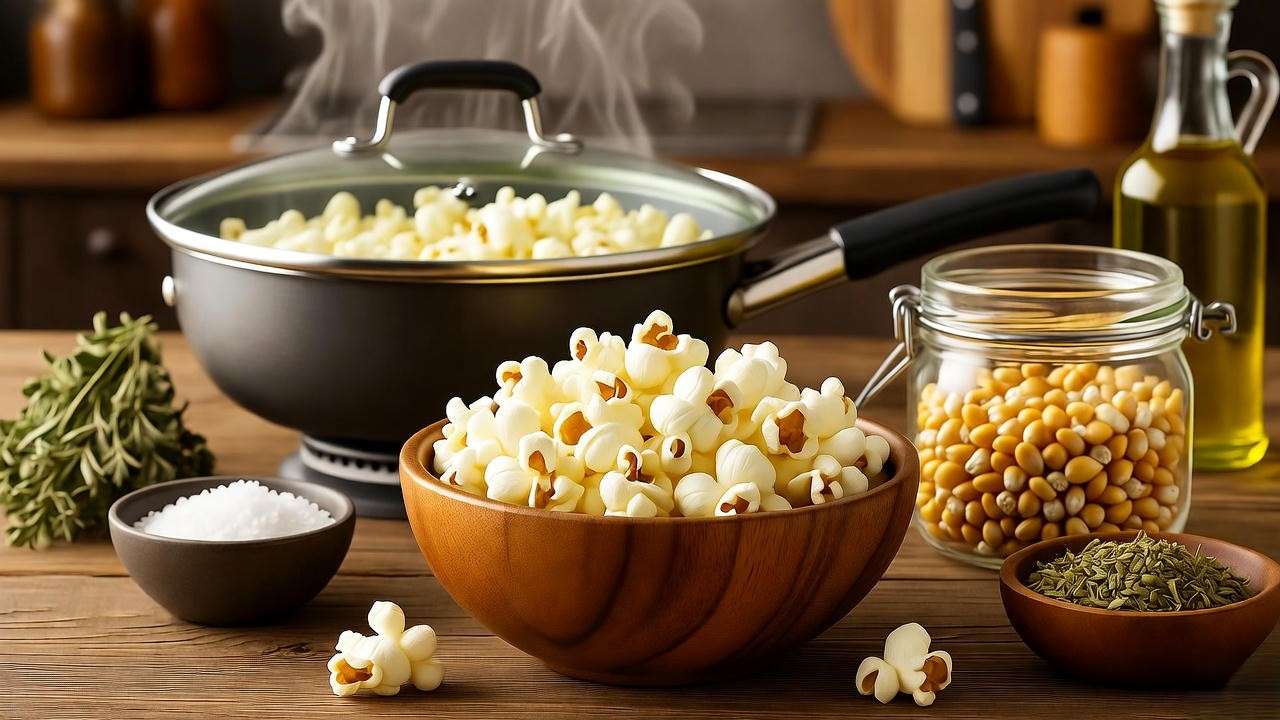
Tip: Experiment with seasonings like nutritional yeast or smoked paprika for unique flavors! 😋
Storing Popcorn Kernels for Longevity 🥫
To keep your kernels pop-ready:
- Store in airtight glass jars or vacuum-sealed bags in a cool, dry place (below 70°F).
- Properly stored kernels can last up to 2 years without losing popping quality.
- Avoid moisture exposure, which can cause mold or reduce popping efficiency.
Common Mistake: Storing kernels in the fridge or freezer can introduce moisture, so keep them at room temperature instead.
Common Challenges and How to Overcome Them 🚫
Germination Issues 😓
- Causes: Old or low-quality seeds, planting too deep, or cold soil.
- Solutions:
- Test seed viability before planting (see earlier tip).
- Wait until soil temperatures reach 60°F or use a heat mat for indoor starts.
- Plant at the correct depth (1-2 inches).
Pests and Diseases 🐛
- Common Issues:
- Corn Earworms: Larvae that eat kernels. Use neem oil or introduce trichogramma wasps.
- Smut: A fungal disease causing black galls. Remove affected ears immediately.
- Solutions:
- Practice crop rotation to prevent soil-borne diseases.
- Plant marigolds or garlic nearby to repel pests.
- Inspect plants regularly and remove debris to reduce pest habitats.
Poor Yields or Small Ears 😞
- Causes: Inadequate pollination, nutrient deficiencies, or overcrowding.
- Solutions:
- Ensure block planting for better wind pollination.
- Hand-pollinate by shaking tassels over silks during peak pollen production.
- Test soil and add nitrogen-rich fertilizer if needed.
Expert Tips for Growing Popcorn Like a Pro 🌟
- Companion Planting: Pair popcorn with beans or squash (the “Three Sisters” method) to improve soil health and deter pests.
- Crop Rotation: Rotate popcorn with legumes or cover crops yearly to prevent nutrient depletion.
- Saving Seeds: Select the healthiest ears for seed saving. Dry and store kernels in a labeled container for next season.
- Sustainable Practices: Use rainwater collection systems or organic mulch to conserve water and enrich soil.
Expert Quote: “Growing popcorn is a delightful blend of science and fun. Watching those kernels transform from seed to snack is a lesson in patience and reward.” – Dr. Emily Hart, Horticulturist, Cornell University Extension.
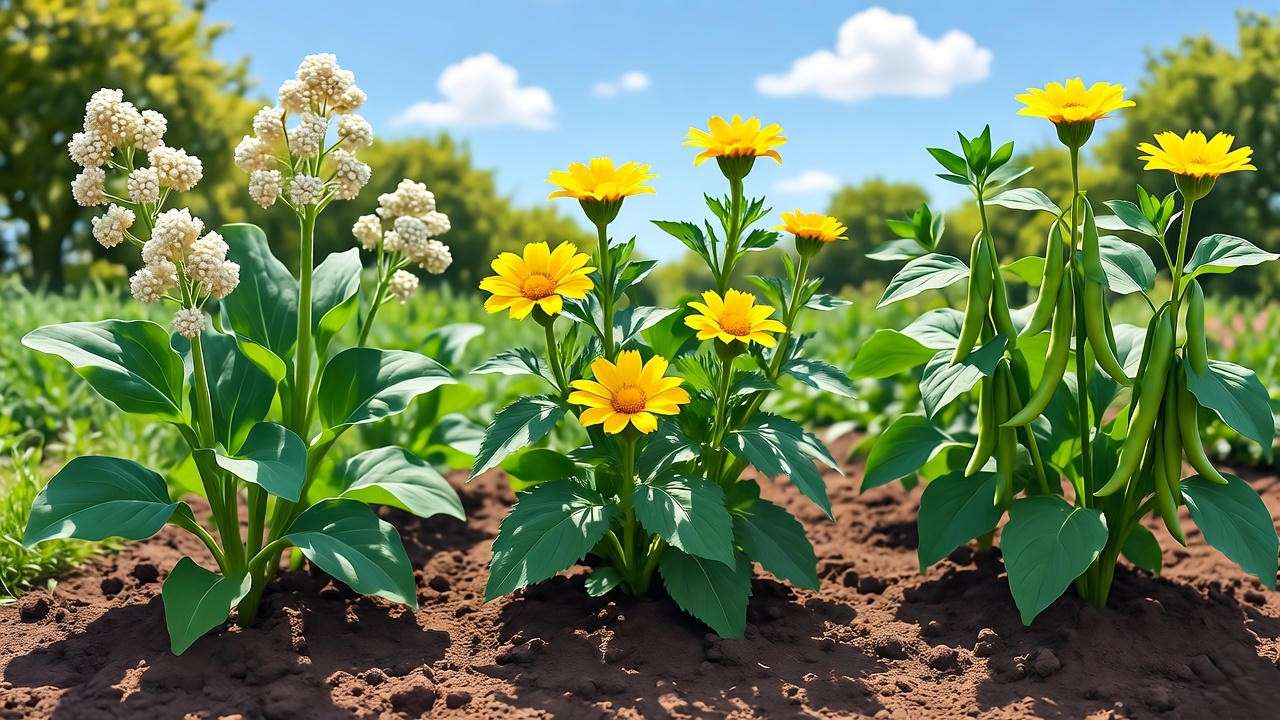
FAQs About Growing Popcorn Seeds 🌽
- Can you plant store-bought popcorn kernels?
Store-bought kernels are often heat-treated or too old to germinate. Stick to seeds from reputable suppliers for best results. - How long does it take to grow popcorn?
Most varieties mature in 85-120 days, depending on climate and seed type. - Do popcorn plants need a lot of space?
Yes, plan for 4-6 feet per plant and use block planting for pollination. - What’s the best soil for popcorn?
Fertile, well-drained loam with a pH of 6.0-7.0 is ideal. - Can I grow popcorn in containers?
Dwarf varieties like Strawberry Popcorn work in large containers, but yields may be lower.
Conclusion: Start Growing Your Popcorn Today! 🎉
Growing your own popcorn is a rewarding adventure that combines the joys of gardening with the satisfaction of a homegrown snack. From selecting the best popcorn seeds for planting to harvesting and popping your kernels, every step is a chance to connect with nature and savor the fruits of your labor. Whether you choose vibrant Strawberry Popcorn or reliable Robust Pop 400MR, your garden can yield delicious results with the right care.
Ready to start? Pick a seed variety from our top recommendations, prepare your garden, and get planting! Share your popcorn-growing journey in the comments below or tag us on social media. For more gardening inspiration, check out our guides on composting, edible crops, and sustainable plant care. Happy growing! 🌱🍿

